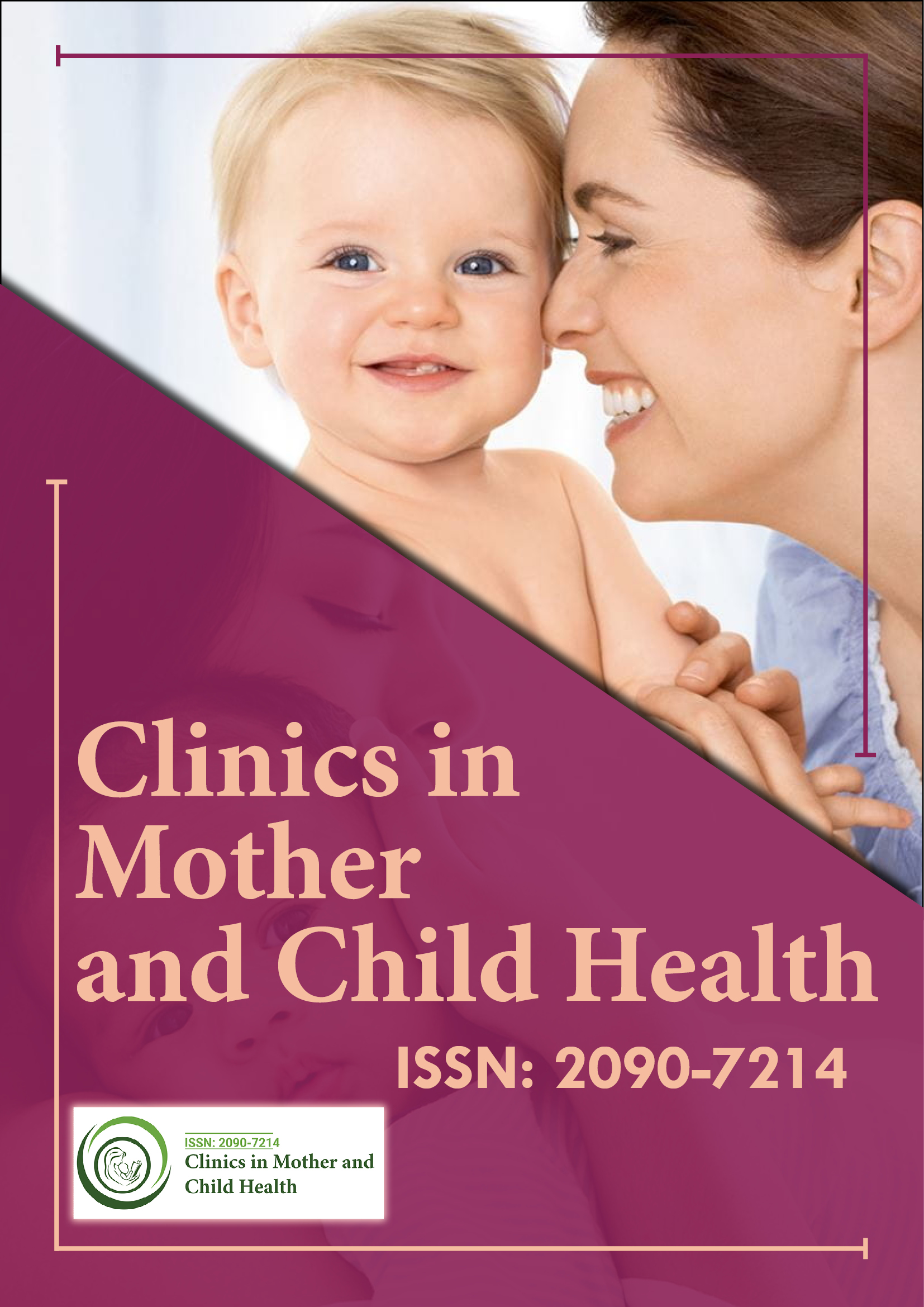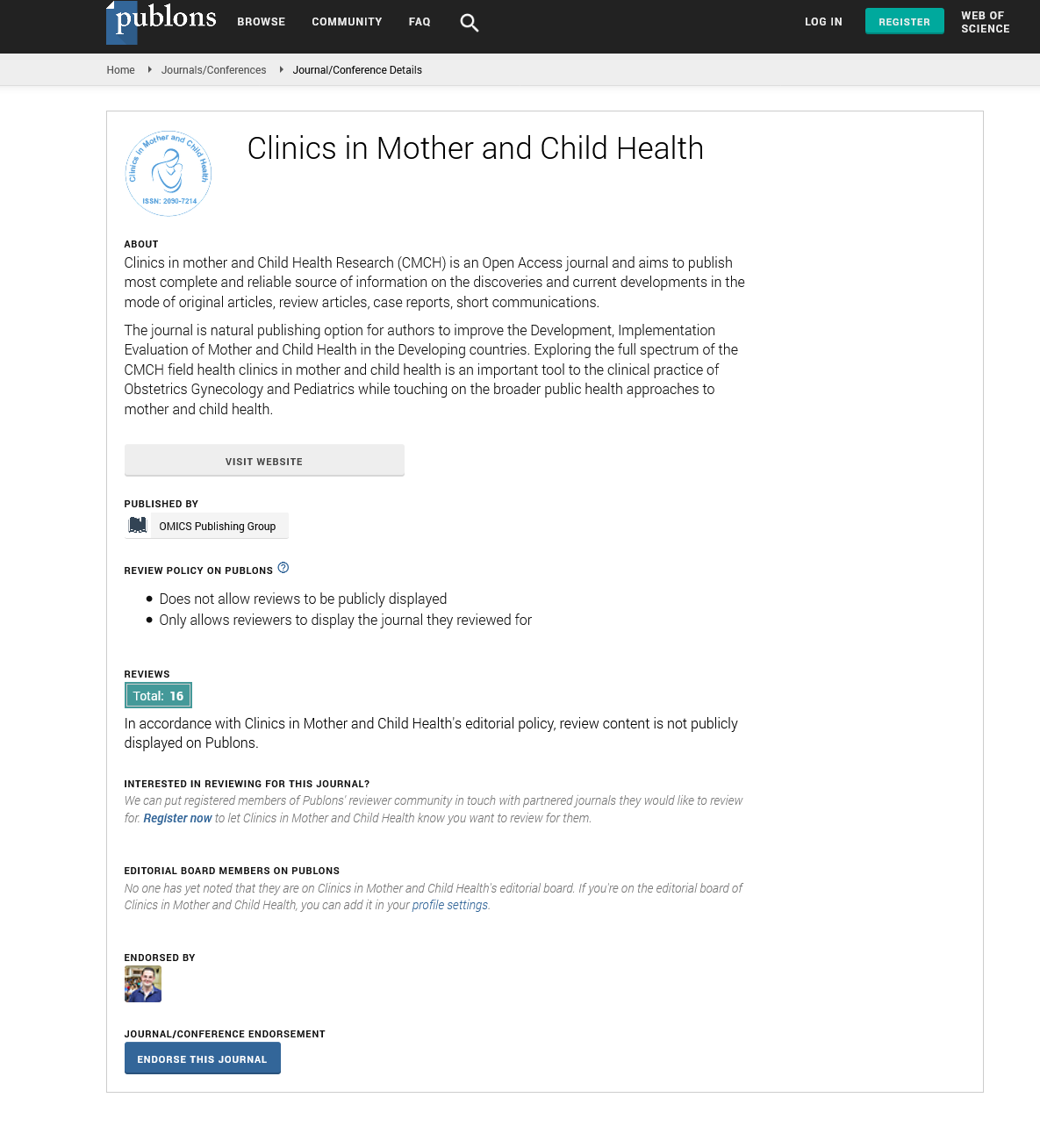Indexed In
- Genamics JournalSeek
- RefSeek
- Hamdard University
- EBSCO A-Z
- Publons
- Geneva Foundation for Medical Education and Research
- Euro Pub
- Google Scholar
Useful Links
Share This Page
Journal Flyer

Open Access Journals
- Agri and Aquaculture
- Biochemistry
- Bioinformatics & Systems Biology
- Business & Management
- Chemistry
- Clinical Sciences
- Engineering
- Food & Nutrition
- General Science
- Genetics & Molecular Biology
- Immunology & Microbiology
- Medical Sciences
- Neuroscience & Psychology
- Nursing & Health Care
- Pharmaceutical Sciences
Commentary - (2025) Volume 22, Issue 8
Supporting Women and Infants in an Australian Regional Health Clinic
Emily Carter*Received: 01-Aug-2025, Manuscript No. CMCH-25-30092; Editor assigned: 04-Aug-2025, Pre QC No. CMCH-25-30092; Reviewed: 16-Aug-2025, QC No. CMCH-25-30092; Revised: 21-Aug-2025, Manuscript No. CMCH-25-30092; Published: 28-Aug-2025, DOI: 10.35248/2090-7214.25.22.539
Description
In remote regions of Australia, maternal and child health clinics serve communities that are spread across vast distances, where accessing a hospital can require several hours of travel. These regional clinics play a vital role by offering a range of services including prenatal care, child development monitoring, immunizations and health education. The care teams are often composed of general practitioners, specialist nurses, Aboriginal health workers and visiting pediatricians. Their work is based on a collaborative model that ensures integrated and continuous care across both townships and Indigenous communities. One of the primary aims of these clinics is to detect and manage prenatal risk factors early. Conditions such as high blood pressure, anemia and gestational diabetes are common concerns. To identify these issues, clinics routinely conduct blood pressure checks, blood tests and glucose screenings at set intervals throughout pregnancy. When results indicate potential complications, the clinics coordinate further testing or specialist care with larger regional hospitals. Ensuring smooth referrals and timely transport is critical. Many clinics have partnerships with air and ground ambulance providers and maintain direct coordination with hospitals to minimize delays in accessing urgent care.
Given the high proportion of Indigenous clients, cultural respect and sensitivity are essential elements of care delivery. Clinics often employ Indigenous health liaison officers who assist in making healthcare more culturally appropriate. These officers help bridge communication gaps, adapt messages to align with local traditions and support language translation when needed. Health education resources are often customized using visual tools that reflect familiar settings and engaging respected elders in health messaging to ensure relevance and understanding. Building trust through culturally sensitive and consistent care helps encourage Indigenous women to seek prenatal services early and remain engaged throughout their pregnancy.
Geographic isolation presents ongoing challenges for these clinics. Staffing shortages are common and health workers often face burnout due to the demands of covering extensive service areas. To address this, many regions implement shared staffing models that allow for rotating schedules between main hubs and satellite clinics. Additionally, telehealth has become an important tool. Through video conferencing, patients can consult with obstetricians and pediatricians without needing to travel long distances. This approach supports timely diagnosis and treatment of complex cases while reducing the physical burden on families.
Monitoring child health is another critical responsibility of these clinics. Staff track children’s growth and development, administer vaccinations according to schedule and advise parents on essential topics such as nutrition, sleep routines and early learning activities. If developmental delays or concerns are noted, early intervention services are activated. Since remote areas often lack local early childhood support systems, clinics frequently collaborate with education departments, social services and non-profit groups to ensure families receive the assistance and visits they need. This multi-agency approach helps fill service gaps and improves outcomes for children in isolated communities. To maintain high standards of care, data collection and ongoing program evaluation are essential. Clinics keep records of important health indicators such as antenatal visit attendance, birth outcomes, immunization rates and referrals for developmental concerns. These statistics are used to inform decisions on how to allocate resources, improve outreach, or adjust staffing plans. Periodic audits of the services help to identify areas where care may be lacking, such as missed screenings or follow-ups and lead to corrective actions such as targeted staff training.
Some remote regions in Australia have reported notable success stories. These include rising antenatal care participation rates, reductions in the number of babies born with low birth weight and improvements in child immunization coverage. Over time, better prenatal and child health services contribute to fewer neonatal complications and enhanced developmental outcomes. However, ongoing issues such as geographic isolation, harsh environmental conditions and social disadvantage continue to pose challenges. To build on these successes and address persistent gaps, strong partnerships among local clinics, regional hospitals, government agencies and community organizations are essential. Joint training initiatives, sustained funding for telehealth technologies and innovative outreach efforts such as mobile health units that travel to hard-to-reach communities are key strategies. Continued focus on culturally informed care builds community trust and increases service use. With coordinated efforts and the right support, regional maternal and child health clinics can have a profound and lasting impact on the wellbeing of women and children across remote Australia.
Citation: Carter E (2025). Supporting Women and Infants in an Australian Regional Health Clinic. 22:539.
Copyright: © 2025 Carter E. This is an open-access article distributed under the terms of the Creative Commons Attribution License, which permits unrestricted use, distribution and reproduction in any medium, provided the original author and source are credited.

